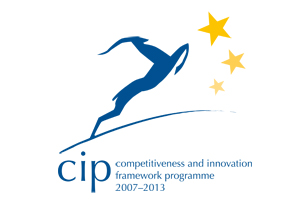Knowledge Networking Portal for Sustainable & Responsible Tourism










 Ligatne (LV)
Ligatne (LV)
| Contributor | Sabrina Vecchio Ruggeri |
|---|---|
| Country | Latvia, |
| Keywords |
|
| Release date | 23/06/2014 |
| Topics |
|
| GSTC Criteria for Destinations |
|
| Type |
|
| # | File name | Contributor | Release date | Uploaded by | Upload date | Size | Content type |
|---|
| Good Practice Innovation Sheet | ||||
| Items | Description | |||
| 1. WHO | ||||
| Key people and organisations (initiator, leader, partners) | Ligatne region local government | |||
| Culture and Tourism Centre of Ligatne | ||||
| Key Figures | Surface | Inhabitants | Tourism arrivals | Tourism nights |
| 7,4 km2 | 1,000 | 170,000 | unknown | |
| 2. WHY | ||||
| Reason for taking the good practice action | 1815 Konrad Kyber and Justus Storch, 2 German tradesmen from Riga came to Ligatne village and founded a Paper-Mill. 1890-ties factory is owned by the Mentzenforff family and an exemplary workers’ village and a developed social system is developed. 1960-ties industrialization in the USSR reaches its peak. 1 000 workers are employed in the mill 1990-ties USSR collapses, majority of factories in Latvia are going bankrupt, unemployment is growing, people are leaving towns and heading to the capital- Riga and abroad, the industrial village preserving its look from end of 19th Ct is undervalued, wooden architecture considered as old barracks | |||
| Issues and challenge |
|
|||
| 3. HOW | ||||
| Methods /steps / tools used (to develop the good practice) |
1. Owners of the Mill takes a decisive action and change the raw-material used in the production from wooden pulp to waste-paper moving to re-cycling . 1.1. The Mill gets involved in the tourism development allowing guided tours in the production and showing both the industrial heritage and also nature-friendly solutions of nowadays. 2. Municipality takes a decision to preserve the local industrial and cultural heritage and develop tourism as one of the priorities. 2.1. Major project, co-financed by ERDF is launched to build two tourism trails aimed to focus on cultural heritage of Paper-Mill village; 2.2. Tourism information centre is founded; 2.3. Local people are trained to work as the guides; 2.4. Marketing and public relation activities are commenced |
|||
| 4. RESULT | ||||
| Specific/measurable results, benefits | 1) 10 local people getting additional income working as guides in Ligatne village Indra Ramāne (29) mother of 4 years old daughter and 6 years old son, used to live in Latvian biggest resort town Jurmala, moved to Ligatne in 2009, works for tourism information for a half-time and is the best guide in Ligatne for children Edgars Viņķelis offspring of the Paper-Mill workers in 4th generation. Craftsman, demonstrates the wood-curving skills to the tourists of Ligatne and works as a guide. Rasma Vanaga (retired) Used to work as an economist in Paper-Mill, ended her career as the Deputy-Director of the Mill. Since 2006 works as a guide in Ligatne, the first person who understood the potential of the village as a tourism destination. 2) number of tourists visiting tourism information centre increased from 3 204 in 2010 to 11 459 in 2011 and 17 714 in 2012. 3) 2 new cafeterias opened, winery of local fruit and berry wines founded, 8 craftsmen selling souvenirs to the tourists, wood-working and eco-lifestyle park opened to the public 4) Paper-Mill of Ligatne continues to work successfully being the only working paper producing factory in Latvia and using only waste-paper as the raw-material. 5) 5. Together with other municipalities lying in the territory of the Gauja National Park a tourism cluster is founded and a new tourism brand «Enter Gauja» developed. | |||
| Recognitions (e.g. awards) | In 2011 Ligatne village wins the European Destinations of Excellence award. Theme of the year: reconstruction of physical sites. | |||
| 5. REFLECTION | ||||
| Lessons learned | Success of each individual player in such a small community depends on the efforts of others: if someone is successful, we all are winners, if someone fails, we all are losing. | |||
| Challenges met | Efforts taken by the local government have given the local people trust that tourism will be supported and a chain of new services have been founded connected to the tourism | |||
| Critical success factors | Only a common strategy aimed to reach long-term goals is going to be successful! | |||
| 6. MORE | ||||
| web-references, documents | www.visitligatne.lv | |||














































